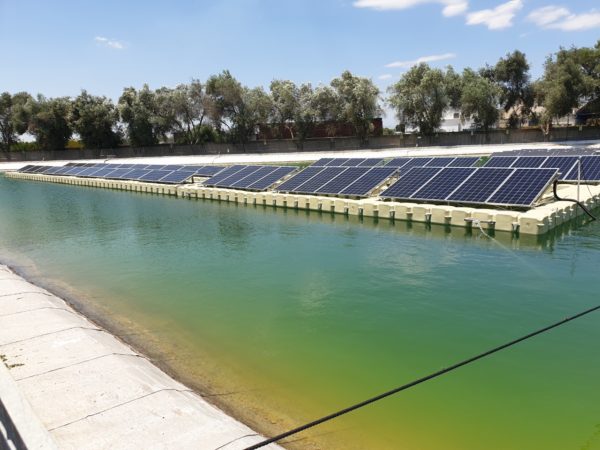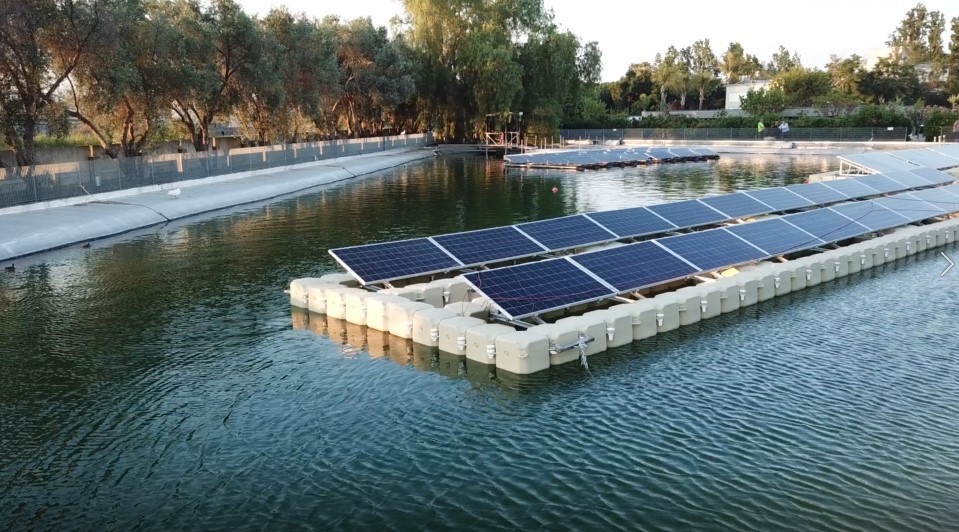Enel Green Power, the renewable energy unit of Italian utility Enel, has deployed a 30 kW floating PV system in Catania, Sicily, to test several solar module technologies.
“Enel is testing different kinds of components and plant configurations,” Fabrizio Bizzarri, the head of Solar Innovation at Enel Green Power, told pv magazine. “At present, three plant configurations have been built and are in operation and we estimate that there is still room for innovation entailing technology improvement and cost reduction.”
Enel is testing several solutions in order to select the most promising ones for future large-scale solar plants. The performance of experimental trials will allow it to optimize plant parameters.
“For exa mple, we are testing the effect of forced water cooling of modules,” Bizzarri said. “We are also investigating the effect of the presence of the solar PV facilities on water and on the environment in general.”
mple, we are testing the effect of forced water cooling of modules,” Bizzarri said. “We are also investigating the effect of the presence of the solar PV facilities on water and on the environment in general.”
It built three experimental plants on a reservoir, in cooperation with the Enel Innovation Lab, a testing platform for innovative solar technologies. The lab is located in Catania, where the company also owns and operates a solar module factory at a site with high solar radiation.
The company is currently testing unspecified bifacial and monofacial commercial modules at the facility. The panels have been tested with the aim of evaluating their ability to withstand the typical working conditions of floating PV systems.
Looking ahead, Enel plans to install floating PV plants in the basins of hydropower plants, located in various countries around the world. “In this case, the PV facilities will have to adapt to the characteristics of the specific basins which differ from case to case,” Bizzarri explained.
The coupling of floating PV with hydropower could help Enel to reduce its costs. “The cost of floating PV is expected to drop over time, owing to technology improvement and better economies of scale,” Bizzarri said. “The possibility, currently under study, to create synergies between floating PV and the hydro plants hosting such facilities should allow for cost reduction, while also improving LCOE.”
This content is protected by copyright and may not be reused. If you want to cooperate with us and would like to reuse some of our content, please contact: editors@pv-magazine.com.




1 comment
By submitting this form you agree to pv magazine using your data for the purposes of publishing your comment.
Your personal data will only be disclosed or otherwise transmitted to third parties for the purposes of spam filtering or if this is necessary for technical maintenance of the website. Any other transfer to third parties will not take place unless this is justified on the basis of applicable data protection regulations or if pv magazine is legally obliged to do so.
You may revoke this consent at any time with effect for the future, in which case your personal data will be deleted immediately. Otherwise, your data will be deleted if pv magazine has processed your request or the purpose of data storage is fulfilled.
Further information on data privacy can be found in our Data Protection Policy.